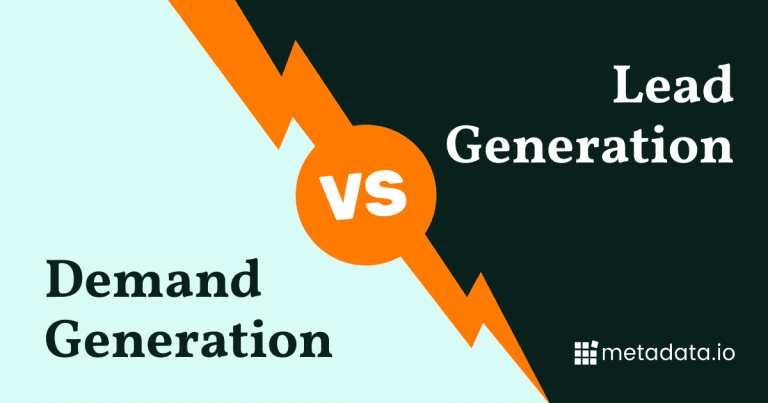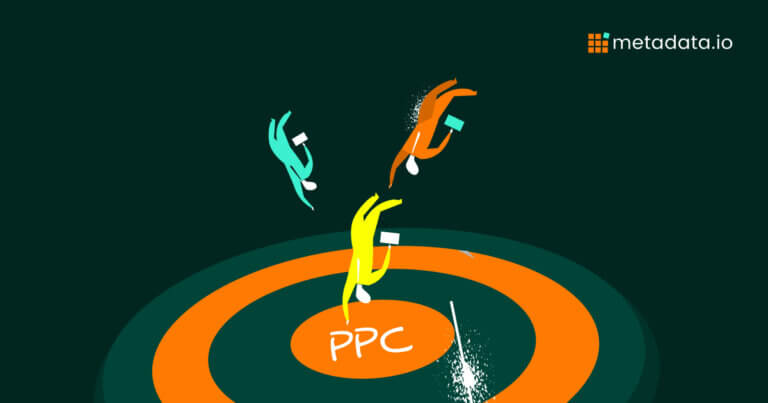Account-Based vs. Inbound Marketing: Which Is Better For You?
B2B marketing isn’t a one-size-fits-all. Some companies thrive with account-based marketing (ABM), a highly targeted approach that focuses on a few high-value accounts with personalized outreach. Others see success with inbound marketing, which attracts leads organically through content, search engine optimization (SEO), and thought leadership.
If you are wondering which one to use, the answer is that it depends on your priorities, audience, and sales cycle. In this article, you’ll learn about their key differences and find the best fit for your business.
What Are the Main Components of Inbound Marketing?
Inbound marketing generates demand by providing valuable content. Instead of pushing sales messages, it pulls in potential customers through blogs, social media, search engines, and email.
Successful inbound marketing starts with high-quality, problem-solving content. Blog posts, webinars, and guides should address real challenges your audience faces. The more useful your content, the more trust you build—positioning your brand as a go-to resource.
Great content needs to be discoverable. SEO helps your content rank in search results, ensuring it drives traffic long after it’s published. Targeting relevant keywords and optimizing pages for user experience can increase organic visibility.
While search brings people in, social media and email help nurture those leads. Posting valuable insights on LinkedIn or Twitter keeps your brand top-of-mind, while well-timed emails provide personalized follow-ups that guide prospects toward a decision.
Calls-to-action (CTAs) and lead capture forms turn website visitors into potential customers. Offering valuable resources—like free templates or exclusive reports—in exchange for contact details helps build your email list. Following up with targeted content keeps prospects engaged and moves them through the buying process.
What Are the Main Components of Account-Based Marketing (ABM)?
ABM focuses on a select group of high-value accounts rather than casting a wide net. It’s a coordinated effort between sales and marketing to engage decision-makers with personalized messaging and outreach.
Success starts with identifying the right accounts. Instead of chasing every lead, ABM prioritizes companies that have the highest revenue potential, the right fit, and a clear need for your solution. Strong alignment between sales and marketing ensures resources are directed toward the most promising opportunities.
Once the right accounts are selected, the next step is mapping out key stakeholders. In complex B2B sales, multiple decision-makers influence purchasing decisions. Understanding their roles, pain points, and priorities allows for tailored messaging that resonates with each person involved.
Personalization is at the core of ABM. Unlike traditional campaigns, which rely on broad targeting, ABM campaigns deliver highly relevant content and outreach based on each account’s unique needs. This could mean customized landing pages, one-on-one outreach, or highly targeted ads designed to move prospects closer to a sale.
Key Differences Between Inbound Marketing and ABM
Understanding the differences between inbound marketing and ABM helps you choose the right strategy for your business. While both aim to attract and convert prospects, they differ in audience targeting, execution, and success metrics.
Audience & Approach
Inbound marketing casts a wide net, attracting anyone searching for knowledge or solutions. It uses SEO, social media, and educational content to draw in potential buyers and nurture them over time. The goal is to build brand awareness and trust, guiding leads through the sales funnel until they are ready to buy.
ABM takes the opposite approach, focusing only on high-value accounts. Instead of reaching as many people as possible, ABM is about deeper engagement with a select group. Sales and marketing teams work together to identify key decision-makers and create personalized outreach, tailored content, and highly targeted campaigns. Every interaction is customized to the specific needs of each account.
Goals & Metrics
Since the approaches differ, so do the ways success is measured. Inbound marketing tracks broad engagement metrics like website traffic, lead quality, and conversion rates. A strong inbound strategy builds a steady pipeline by attracting and nurturing a large volume of prospects.
ABM is more focused on revenue impact from specific accounts. It measures success by tracking account engagement, stakeholder interactions, and deal velocity—how quickly targeted accounts move through the sales process. Instead of looking at lead volume, ABM evaluates how well marketing efforts penetrate key accounts and contribute to closed deals.
Strategy Execution
Inbound marketing relies on content calendars and automated workflows to consistently publish valuable content. Blog posts, email sequences, and lead magnets attract visitors and nurture them through the buying journey.
ABM is more structured around collaboration between marketing and sales. Many teams set up a service-level agreement (SLA) to define shared goals, such as the number of key accounts marketing needs to engage. Regular check-ins between teams help fine-tune messaging and ensure outreach efforts align with each account’s needs.
Another key difference is how each strategy monitors performance. ABM closely tracks engagement within target accounts, analyzing where decision-makers drop off in the funnel. Inbound marketing, on the other hand, focuses on overall content engagement and site traffic. Both require ongoing coordination, and shared dashboards help teams stay aligned and adapt their strategies in real time.
When to Use Inbound Marketing
Inbound marketing is the best choice when you need to build awareness and attract a broad audience without relying on direct outreach. It’s great for companies looking to generate leads organically through valuable content rather than heavy outbound sales efforts.
Brands that prioritize thought leadership and trust-building benefit the most from inbound strategies. Consistently sharing useful insights helps position a company as an industry authority, making it the go-to resource for potential customers.
For teams working with limited ad budgets, inbound marketing can reduce reliance on paid campaigns while still expanding reach. It’s especially useful in industries where prospects conduct thorough research before making a purchase. Offering insightful content aligned with different stages of the buyer’s journey allows potential customers to find and engage with your brand when they’re looking for solutions.
Beyond lead generation, inbound marketing nurtures long-term relationships. Engaging prospects with educational content, case studies, and interactive tools keeps them involved and builds trust over time.
How a Fintech Leader Uses Inbound Marketing
Plaid, a leading fintech company, uses inbound marketing to educate businesses and consumers about financial technology. Their resource library is filled with in-depth guides, industry insights, and best practices that attract professionals researching financial APIs, payments, and banking innovation.
Additionally, Plaid’s blog keeps readers updated on industry trends, regulatory changes, and emerging technologies in financial services. This consistent stream of valuable content helps them engage a highly informed audience, build credibility, and drive demand, without relying solely on outbound sales.
When to Implement ABM
ABM works best when a small number of high-value accounts contribute significantly to revenue. If winning a few key clients has a major impact on business growth, focusing on personalized engagement rather than broad lead generation makes sense.
This strategy is especially useful for companies with long sales cycles and high-ticket products, where multiple decision-makers are involved. Building strong relationships and trust with stakeholders increases the likelihood of closing deals. Some companies shift away from inbound marketing entirely to prioritize ABM, directing resources toward prospects with the highest potential return.
PitchBook’s Data-Driven ABM Strategy
PitchBook, a financial research firm, needed a more efficient way to generate leads and personalize outreach. Instead of broad targeting, the company used machine learning to analyze over 2,000 accounts and identify those most likely to convert. This data-driven approach allowed them to focus on the top 300 high-potential accounts and deliver tailored digital ads and LinkedIn campaigns.
The results spoke for themselves. Website visits from target accounts increased by 79%, and engagement with the PitchBook brand surged by 220%.
Integrating Both Inbound Marketing and ABM
Inbound marketing and ABM aren’t opposing strategies—they work better together. Inbound marketing fills the pipeline with engaged prospects, while ABM provides a personalized approach for high-value accounts. A strong marketing strategy uses both to generate broad interest while giving the right level of attention to key buyers.
Not every lead from inbound marketing is the right fit for ABM, but when high-value prospects engage with inbound content, they can transition into an ABM strategy for deeper nurturing. Sales teams benefit from a steady stream of high-quality contacts, while marketing can repurpose ABM content—such as case studies or executive-level insights—for inbound efforts, making content go further.
Practical Ways to Combine Inbound and ABM
Bringing these strategies together requires the right tools and collaboration between marketing and sales.
- Use CRM and automation tools – Platforms like Salesforce or marketing automation software help track engagement and move high-potential inbound leads into ABM workflows. Consolidating data allows teams to personalize outreach without extra manual effort.
- Align on lead qualification – Defining what makes a lead “ABM-worthy” prevents misalignment. Marketing and sales should agree on the key indicators, such as company size, industry, or engagement level, that signal when a lead should shift from inbound to ABM.
- Prioritize personalization where it matters most – Not every lead needs an ABM approach. Inbound continues nurturing broader audiences, while ABM focuses on major opportunities with tailored messaging and outreach.
- Regular sales-marketing check-ins – Frequent updates between teams keep both strategies working together. Sharing insights about which content or outreach methods are driving conversions helps refine both inbound and ABM efforts.
Integrate Inbound Marketing and ABM for Maximum Impact with Metadata
Inbound marketing attracts a wide audience, building trust and engagement over time, while ABM focuses on high-value accounts with personalized outreach. Combining both strategies creates a powerful approach that scales lead generation while delivering a targeted, high-touch experience where it matters most.
Balancing these strategies requires seamless data integration, audience segmentation, and automation. Metadata simplifies this process by using AI-powered audience targeting to identify and engage the right buyers, whether they come through inbound marketing efforts or ABM outreach. Automated campaign execution and real-time optimization help marketers scale their efforts while keeping messaging relevant and impactful.
Request a demo today to see how Metadata can elevate your B2B campaigns.


